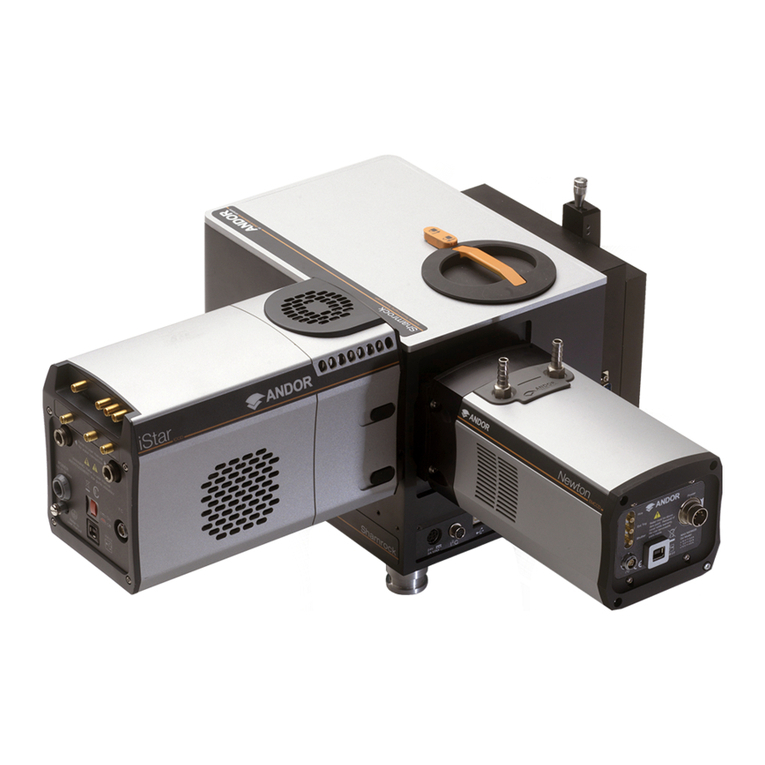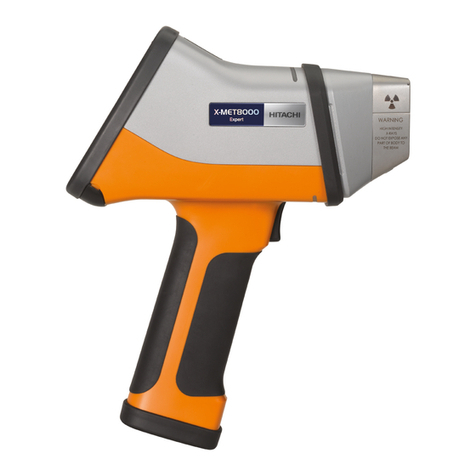
6
The probe relies on the wire below the liquid surface being more efficiently cooled than
that in the gas above the liquid. Thus the Joule heating of the resistive section of the
wire is sufficient to keep this above its critical temperature where it is in gas but not
where it is in liquid. To maintain this situation requires the correct value of current in the
wire. The graph accompanying the probe drawing at the end of this manual shows how
this current varies as a function of the temperature of the liquid in the reservoir. With no
current in the wire, the entire length will become superconducting. It is therefore
necessary to include a small heater resistor in thermal contact with the top of the wire to
drive the top end of the wire into its resistive state. Provided the current in the wire is
sufficient this resistive region will then propagate down the wire to the liquid surface.
When current has been flowing for sufficient time to ensure that the resistive region has
reached the liquid, the voltage across the wire is measured and will be directly
proportional to the length of wire in gas, from which the liquid level may be calculated.
When the measurement has been made, the current through the wire is turned off and
the measured reading displayed. The process is repeated at intervals varying from a few
seconds to a few hours, depending upon the expected rate of change in the level.
The maximum probe length that can be measured, depends upon the resistivity of the
probe wire. Prior to firmware version 1.08, ILM was designed to handle the standard
Oxford Instruments probe wire, with a typical resistivity of 178 ohms/metre. Since version
1.08 this parameter may be adjusted up to a maximum value of 200 ohms/metre. There
are now two types of wire in use:. For probes up to 1.4m active length, the standard wire
is nominally 166 ohms/metre and operates at a current of 130mA. For probes up to 2m
active length, a thicker wire is used, with a nominal resistivity of 61.2 ohms/metre,
operating at a current of 250mA.
1.3.2 Nitrogen Level Probe
The nitrogen probe is constructed of two concentric stainless steel tubes. The annular
space between these acts as a capacitor with the dielectric consisting of liquid or gaseous
nitrogen. Liquid nitrogen has a relative permittivity of 1.45, so that the capacitance
increases by around 45% for the portion of the probe that is in liquid. The probe head
incorporates an oscillator, which uses the probe capacitance to define its period. Hence
the oscillation frequency may be used as an indicator of liquid level. There are no
adjustments in the probe head for ILM. The working range of the oscillator (5 kHz to 65
kHz) can handle the full range of probe lengths up to 2 metres.
1.3.3 Why Two Different Sensing Methods Are Used
The capacitance method cannot be used routinely for liquid helium. (It can be used for
certain specialised applications where the reservoir is strictly isothermal.) The relative
permittivity of liquid helium is only 1.055, which is close to the figure for cold helium gas
at 4.2K. Thus the probe would be more responsive to temperature gradients within the
gas above the liquid surface, than to the position of the surface.
With modern high-Tc superconductors, it is possible to make a superconductive nitrogen
probe. However this would be much less robust than the capacitive probe, which works
well for nitrogen. Hence ILM uses the most appropriate sensing technique for each
cryogen. By allowing ILM to accept inputs from either type of probe, there is no cost
penalty in using two different sensing methods.





























